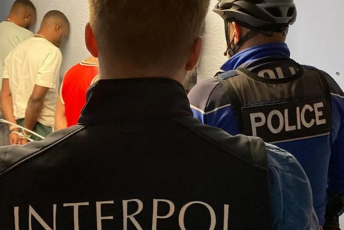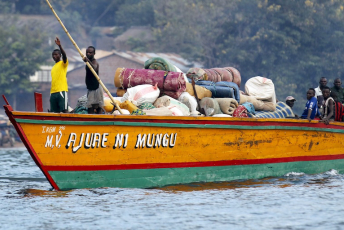Congo-Brazzaville President Denis Sassou Nguesso received a World Health Organization (WHO) award in August 2024 for his commitment to health. This followed a decade of work to address the counterfeit medicine trade in Congo-Brazzaville and across Africa.
Despite these notable efforts, the illegal medicinal drug trade persists. This includes counterfeit medicines, and also genuine medication not authorised for use in Congo-Brazzaville. In major cities like Brazzaville and Pointe-Noire, illegally traded medicine comes second to the private sector trade; while the public health system accounts for only 13% of supply.
This indicates a public health crisis characterised by the low availability of drugs at health facilities, a scarcity of pharmacies and inequitable geographical distribution. Medicines from official sources are also costly – even generic drugs can be seven times more expensive than their international reference prices. These are worrying obstacles for people trying to access legitimate medications.
In contrast, bana mangangas (referring to both the sellers and the practice of selling illicit drugs – ‘bana’ meaning ‘the children of’ and ‘manganga’ meaning ‘medicine’) are ubiquitous, providing widespread access to various drugs, including antibiotics and painkillers. Street medicines are cheaper, and accessible on credit and in small quantities if needed.
According to Dr Ray Mankele, a pharmacist and President of the Congolese Foundation for Access to Medicines, the continued use of illicit medication is linked to lack of awareness of the potential harms among the public. Additionally, there exists insufficient knowledge about the availability of alternative generic medications, which are often more affordable than street drugs.
For example, three deworming medications available in Congo contain the same active ingredient, mebendazole. Vermox, a children’s anti-parasite, costs XAF1 250 ($2.00) in pharmacies. This relatively high price means that parents often seek the medication through illicit channels, where they can buy six tablets of (unauthorised) Wormex for XAF150 (00.25¢) from street vendors. However, they are not informed (and do not know to ask) that they can buy the generic Wormin for XAF100 (00.15¢) for six tablets at a pharmacy. Pharmacists often do not recommend generic drugs because they profit less than from brand-name drugs.
Bana manganga are mostly younger individuals without health science backgrounds, acting as prescribers, medication dispensers and wholesalers. Their products are displayed on exposed makeshift stands, where the unsanitary conditions can compromise their quality. For reasons explored below, these medicines escape regulation by health authorities, posing serious risks regarding efficacy and safety.
Other street vendors include veterans from the 1997 civil war trying to eke out a living where other options are limited. They view selling street medicine as a form of economic reintegration, according to a local journalist who requested anonymity.
Organised transnational criminal supply chains and distribution networks facilitate the bana manganga process. A local Congolese police official who requested anonymity said much of the illicit flow comes from the Democratic Republic of the Congo (DRC). Shalina Healthcare, the DRC branch of an Indian firm known for inexpensive medications, produces drugs approved for the DRC but not for Congo. These medicines enter Congo through illicit supply chains, are stored improperly and are sold by unqualified vendors.
More expensive and unauthorised street medicines are also smuggled from India and China into Nigeria, from where they are trafficked into Congo. Congo then acts as a distribution hub, from where illicit medicine is trafficked into neighbouring countries, specifically Cameroon, Angola and Gabon. In July 2024, around 80 000 counterfeit tablets en route from Congo were seized in Gabon.
Accounts from ENACT interviews with journalists, pharmacists and police officers described the well-established distribution of these medicines. The flows are facilitated by corrupt officials and lax border controls. Again, corrupt officials in Congo divert approved medicines from public purchasing centres or pharmacies to sell to bana manganga. Wholesalers smuggle medicines into local towns, supply public hospitals and sell directly to retailers on the streets.
This illicit smuggling and trade undermine health outcomes. A 2023 United Nations Office on Drugs and Crime Report said at least 170 000 children die annually from pneumonia due to falsified medicines in low- and low-middle-income countries. Globally, the illegal medicine trade generates substantial profits for criminal organisations, reportedly yielding up to 20 times more than heroin trafficking.
Fake medicines on Congo’s streets weaken the rule of law. Bana manganga have formed a sometimes-violent chain. In 2021, a pharmacy belonging to the head of a pharmacists’ association was ransacked following a police crackdown on bana mangangas. There were no arrests or prosecutions, leaving pharmacists feeling insecure.
In 2016, Congo signed the MEDICRIME Convention to tackle pharmaceutical crime. In 2017, Nguesso urged the global community to prioritise fighting falsified medicines and ensured that Congo actively participated in the Lomé Initiative, where several states committed to reforms to combat the trafficking of substandard and falsified medical products.
In June 2023, Congo adopted the Central African Economic and Monetary Community sub-regional plan to address falsified medicines and illicit distribution networks. At the national level, the fight against counterfeiting is a focal point in the country’s National Health Policy.
However, there is a disconnect between political intentions and strategic implementation.
Scant statistics on the scale, types and effects of illicit drugs complicate the problem, leading to scepticism about the risks posed by these drugs and a lack of urgency in addressing the issue.
While the government has adopted the WHO’s definitions regarding ‘substandard’, ‘unregistered’ and ‘falsified products’, it lacks the capacity for effective quality control. This includes being able to conduct effective post-market controls and bioequivalence studies (whereby two or more pharmaceutical agents are analysed to verify that they contain identical active ingredients and produce equivalent effects) on all medications.
Good manufacturing practices oversight for imported medicine is non-existent. This despite Congolese pharmacists advocating for government to expand the regulations on imported medication, particularly on the conditions of storage and handling and the associated risks of contamination of medical products. Despite signing the Lomé Initiative, laws against the sale and possession of drugs outside official channels remain unenforced in Congo, allowing vendors to operate with minimal risk. Although sporadic police raids occur where these products are sold, bana manganga return shortly after.
Efforts to combat street drugs often come up against conflicting stakeholder interests, hampering comprehensive action against illicit medicine sales. Disagreement about how to define illicit medicines among these actors complicates legal frameworks and punitive measures aimed at discouraging and penalising criminal activities surrounding it.
While Congo has made strides, by establishing a central purchasing centre for essential drugs in 2015 and adopting a pharmaceutical policy, challenges remain.
Reinvigorated action is needed. Focusing on increasing the number and geographical spread of pharmacies and ensuring access to affordable generics is essential, together with stringent penalties for corruption along the illegal distribution chain. Without these, other efforts to oversee the import of quality medications, training customs officials to inspect medical products, and criminal penalties for local level illegal trade are unlikely to succeed.
Finding common ground and working coherently across sectors is currently also undermining solutions that can create changes to the current situation. A dedicated process to find consensus for operational definitions of illicit medicine and raising awareness regarding the benefits of generic medications and the health risks associated with illicit drugs is an imperative. For the users, public awareness initiatives are vital to inform communities about the risks of illicit medicines and the availability of cheaper generics in pharmacies.
Raoul Sumo Tayo, Senior Researcher – Central Africa, ENACT, ISS
Image: Lance Reis/Unsplash







